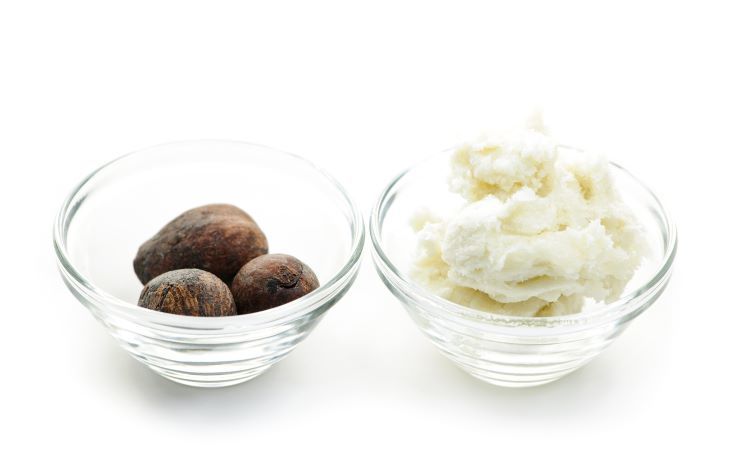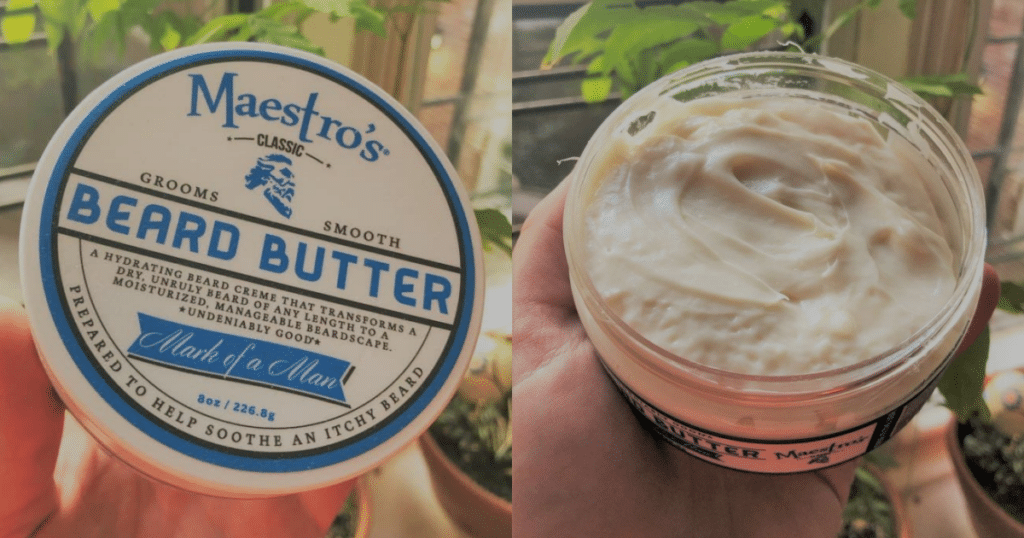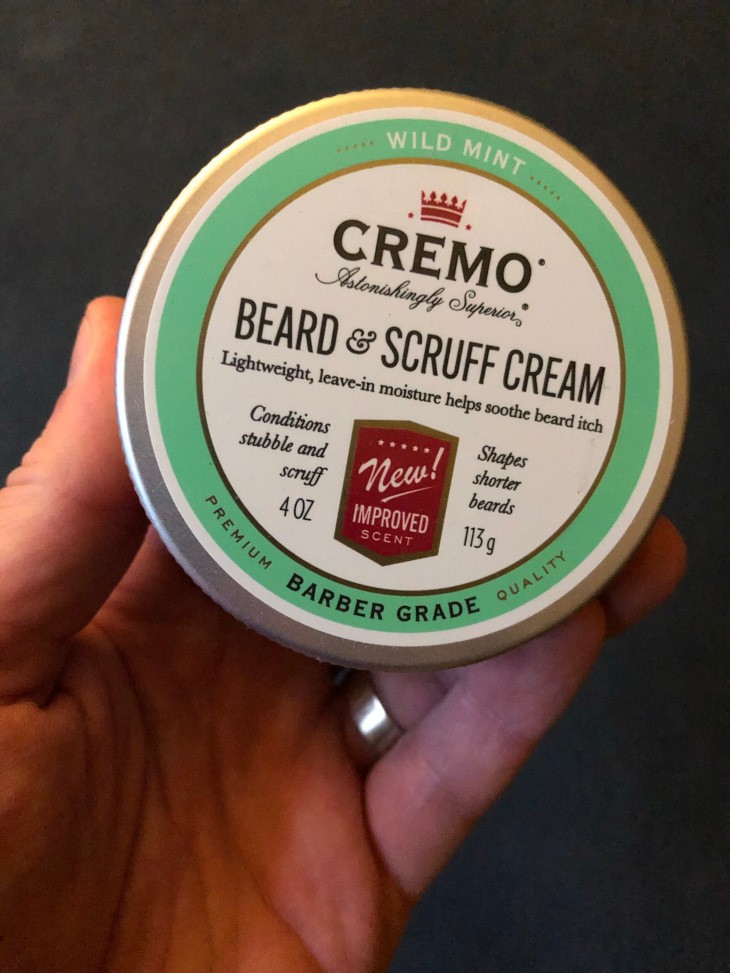Are you tired of letting the beard butter industry—aka, “Big Beard Butter”—dictate what kind of beard butter you use?
Well, now’s your chance to stick it to The Man, and here we’ll tell you how.
Below, we’ll discuss three of our favorite DIY beard butter recipes. We’ve got:
> a very simple beard butter that’s super-easy to stir up;
> a vegan butter recipe, for those of you who want to stay away from animal products; and
> a whipped butter recipe for all y’all who want to get fancy.
And, if those don’t strike your fancy, you can jump on down to the section titled “How to Make Your ‘Signature Scent’ Beard Butter,” where we explain how you can devise your own beard butter, with the consistency you like and the fragrance that can become your calling card.
Ready, steady? Let’s go:
Three Beard Butter Recipes to Get You Started
Here are our favorite recipes, so you can learn how to make beard butter at home. They’re quick, they’re easy, and each one offers something a little different.
Basic Beard Butter for Beginners
This simple beard butter recipe is awesome for new butter-makers out there, and you might also like it if you’re transitioning from beard balm or wax to a softer beard butter.
This recipe contains the oils and butters that nourish your beard and the face under it, as well as just a touch of beeswax to give your beard hairs a light hold. Plus, it’s short and easy-to-follow, so you won’t have to buy too many new ingredients.
For us, it’s a nice balance between a nourishing product and a styling product. Who doesn’t love a two-in-one?
Ingredients:
1 ounce of shea butter
1 ounce of argan oil
1 teaspoon of beeswax
5-10 drops of cedarwood essential oil
Instructions:
Step 1: Melt Gently. To start, you’ll need to melt your butter, oil, and wax together so they can become a cohesive mixture. Over-heating or boiling them will destroy many of the precious antioxidants in the oils, and it’ll also transform their physical properties, so it’s important that you melt them down over very low heat. We highly recommend placing them in a heat-safe bowl over a pot of boiling water, for the ultra-gentle double boiling method.
Step 2: Mix and Remove from Heat. As the mixture melts down into an oil, give it a good mix to ensure that the ingredients are all well incorporated with one another. Once your bowl is full of a singular mixture of oil, take it off the heat, and give it a few moments to cool down slightly.
Step 3: Add the Scent. Before you can add your fragrance, your future beard butter needs to reach a comfortably warm temperature. Otherwise, the heat will cause the essential oil to evaporate too quickly, so your beard butter won’t have a scent. Once it cools a little, add the essential oil drops to the blend, and give it another mix.
Step 4: Decant and Cool. Finally, all that’s left to do is to decant your mixture into your container of choice (we give some tips further on). Seal it tightly, and put it somewhere safe to cool down to achieve a buttery texture. If you’re in a rush or feeling impatient, you can even put it in the fridge. Once it’s cool, feel free to use it right away!

Vegan Beard Butter Without Beeswax
While beeswax does add a touch of hold to a beard butter recipe, the reality is that it’s not necessary at all. Some purists even argue that beard butter should never contain beeswax and that if your beard is well-trimmed, you won’t need it at all.
No matter the reason, you can easily make a vegan DIY beard butter without any beeswax or other animal-derived ingredients, and it’ll still help to nourish and moisturize your skin and beard.
For this recipe to work, we made a few small changes. We upped the overall butter-to-oil ratio, so the blend will be firmer at room temperature, and included mango butter to balance out shea’s slight oiliness. We also added some coconut oil, which is very creamy but still semi-solid at room temperature—that said, you may want to skip it if you have acne-prone skin.
Ingredients:
0.5 ounce of mango butter
0.75 ounce of shea butter
0.5 ounce of jojoba oil
0.5 ounces of coconut oil
5-10 drops of cedarwood essential oil
Instructions:
Step 1: Mix Gently. Over very low and delicate heat, melt together your plant oils and butters. We recommend a double-boiler setup to avoid boiling the oils. As the butters start to melt to an oil texture, give everything a good mix to incorporate it well.
Step 2: Ready to Scent. Once you have a cohesive oil, take your mixture off the heat and give it a few minutes to cool down. Once it’s not too hot, you can add the cedarwood essential oil and mix it some more.
Step 3: Store, Cool, and Enjoy. Finally, pour your oil into its final container. Seal it, and store it somewhere safe where it can cool down. It will achieve a buttery texture after a few hours at room temperature, but you can put it in the fridge for faster results. Once it’s ready, you can happily massage your new creation into your beard!
Whipped Beard Butter
Are you ready for some whipping action? By adding some air to your beard butter formula, you can end up with a lighter beard butter that still packs the same moisturizing punch. It takes up a bit more space, but it’s very luxurious and we find that the added aeration makes it easier to spread.
We decided to design this formula without beeswax, as well, but if you want a touch of hold, feel free to add some! As long as you don’t add too much, it should still whip up nicely. And if you don’t have all of these ingredients on hand, you can also try whipping any of our other recipes.
Ingredients:
0.5 ounce of mango butter
0.75 ounce of shea butter
0.5 ounce of jojoba oil
0.5 ounces of argan oil
5-10 drops of cedarwood essential oil
Instructions:
Step 1: Get Melty. This recipe has a lot of ingredients, and you have to mix them somehow. Simply melt them all together (but leave out the essential oil) over very low heat or a double boiler, and mix with a spatula or whisk so they actually blend together.
Step 2: Remove and Cool. When your blend of oils and butters has melted to a single oil, you can take it off the heat. Once it has cooled down enough, you can now mix in the essential oil without worrying about most of it evaporating. Next, set it aside and let it cool further—if you’re in a rush, you can even leave it in the fridge for 20 minutes or so.
Step 3: Whip It Good. Once your blend has cooled down to a buttery texture, it’s time to whip it using a whisk or immersion blender. It should take around 5 minutes to achieve a whipped cream-like texture.
Step 4: Store and Use. That’s all there is to it! Use a spatula to decant your whipped beard butter into a sealable container, and you can now use it whenever you like.

Why You Should Make Your Own Beard Butter
The skin under your beard deserves some lovin,’ and what’s better for that than a beard butter? These are the benefits of making your own unique beard butter.
You Know What’s in Your Butter. Commercial beard butters—especially from mainstream brands—can contain preservatives, synthetic fragrances, and hidden chemicals you might not be keen to put on your skin. When you make your beard butter, you get to decide which ingredients belong and which don’t.
It’s a Multi-Use Product. Our beard butters result in a luscious cream that can moisturize more than just your beard or face. Beard butter can also work as a moisturizer for other parts of your body—especially the ones that are very prone to dryness like the elbows or feet.
You Can Save Some Coins. There are a lot of grooming products out there, and the price can really add up, especially if you shop from transparent indie brands that only use natural ingredients. There will be an initial cost to your beard butter ingredients, but a tub of shea butter or a bottle of oil will allow you to make dozens of beard butters for the price of one commercial product.
You’ve Got the Freedom to Customize. As you’ll shortly see, you can customize your recipe in hundreds and maybe even thousands of different ways. You can create your own special product to your exact specifications, and know that there is nothing else like it out there.
You Can Make Gifts for Everyone! Hooray! Since beard butters have multiple uses and are so customizable, they’re also fantastic gifts not just for your bearded friends, but for everyone. A batch with peppermint essential oil can work as an aftershave butter for your clean-shaven friends, while a whipped batch with rose or lavender essential oils can be a lovely body butter for a female friend.
We should mention: if you tried to make your own beard butter and didn’t like the experience, you can always look for store-bought, and here are our recommended butters, should you go that route.
How to Make Your “Signature Scent” Beard Butter
Don’t like cedarwood? Change it! Can’t stand the smell of shea butter? Use a different butter! The best thing about learning how to make beard butter by yourself is that you’re the master, and you get to decide what goes in. Here are our tips to help you figure out how to customize your butter recipe.
Alter Ratios and Beard Butter Texture
You can alter your beard butter recipe by changing ratios instead of ingredients. This is a great way of changing the texture without changing any intrinsic skin or beard benefits, and it’ll help you achieve something that you’ll love. Here’s what you can alter:
The Basic Ratio. Most of our butter recipes contain just a little more plant butter than they do oil, or equal parts butter and oil with a touch of beeswax. This gives a rich and thick cream that still melts and spreads easily, so it’s our recommended default.
More Oil, Less Butter. If you want a more fluid beard butter, you can change your formula so that it’s about 40% plant butter and 60% plant oil. The result will be lighter and faster to melt or spread over the beard, especially if yours is very long or thick. It might also be convenient if you tend to keep your house cold. Just keep in mind that this formula won’t be any less greasy or moisturizing, since oils are just as rich as butters.
More Butter, Less Oil. By shifting your recipe to 65% to 70% plant butter and 35% to 30% plant oil, you’ll end up with a slightly thicker and more solid beard butter. It’ll take a little more work to melt and spread it through the beard, but if you live in a warm climate, this might be exactly what you need. You may also like this better if you find very lotion-y textures a little off-putting, or if you have a shorter beard.
Adding More Wax. Adding more wax to your beard butter will have a huge impact on its performance. A beard butter, generally, shouldn’t have too much wax, since the point is to have it sink a little into the beard and reach the skin. However, if you want a formula that will also do a nice job of smoothing down your beard hair, you can add more wax. You’ll end up with a product that is, arguably, more of a soft-hold beard balm, so you can also check out our article explaining the differences between the two.
Upping the Batch Size. Our butter recipes result in a pretty small quantity of product, and if you’re new to DIY, we recommend sticking to them a little more closely. However, once you get a sense of what you like and what works for you, feel free to double or triple the amount. You’ll be able to make a large batch of beard butter in one go, and you can even change the essential oil blends from tin to tin for the sake of variety.
Change Your Butter
Your beard butter shouldn’t contain any real butter, of course. Plant butter, on the other hand, is an essential component in every beard butter formula.
If you’re not familiar, plant butters are the fats pressed from various nuts and seeds. Unlike oils, plant butters are solid at room temperature, so they’re responsible for beard butter’s creamy texture.
Shea Butter is the go-to, and you’ll find it in almost all beard butters, whether store-bought or homemade. It’s positively loaded with softening fatty acids like stearic and oleic acid, and it also has some skin-soothing effects thanks to linoleic acid, vitamin E, and a few other antioxidants. In beard butter, it’s nicely creamy but not overly greasy, which is why it’s so popular.
While shea butter is the classic choice, there are a lot of other plant butters out there you can try. Here’s the lowdown on the different plant butters you can try in your recipe.
Mango butter is our second favorite. It’s a little lighter and drier in texture compared to shea or other butters, so those with oily skin often like it better. It absorbs into the beard and skin quickly, but it’s still full of beneficial fatty acids and antioxidants. It’s expressed from the mango seed, so it doesn’t smell like mangoes—in fact, it has a neutral, leafy smell that’s lighter than the nutty smell of shea.
Cocoa butter is in third but still great. It’s a rich and very creamy butter with a chocolatey smell that’s difficult to camouflage. It’s a nice addition to your recipe if you have dry skin, but those with acne-prone skin should watch out since it’s a little more likely to cause acne when compared to other butters. It pairs well with warm or sweet essential oils like vanilla, tonka bean, and tobacco.
There are many other plant butters you can experiment with as you dive deeper into the DIY grooming world. Many of them, like cupuacu butter, ucuuba butter, and babassu butter, come from little-known Amazonian plants that pack a serious moisturizing punch.
Choose Your Carrier Oils
On their own, plant butters are too solid, so adding a carrier oil softens them up, giving a texture that’s easier to spread through the beard and over the skin. Different oils have slightly different textures and benefits, so let’s go over some of the ones you can use in your butter recipe.
Jojoba oil is an easy go-to. It’s a wax ester rather than a traditional oil, and it’s famously similar to human sebum. It’s very moisturizing to the skin, and it helps to smooth down and seal the beard hair, which helps to protect it from humidity. It’s a must-have for anyone who uses their beard butter to enhance its style, but if you’re making beard butter for overnight use, we suggest using it along with a more penetrative oil.
Coconut oil is a great addition if your beard hair is very brittle. It’s a penetrating oil, so it helps to strengthen hair from within and combat protein loss. For the skin under your beard, it’s very rich and soothing, although it may not work if you’re acne-prone. As for texture, coconut oil is somewhere between oil and butter since it’s more solid at room temperature, so keep that in mind when deciding on your butter to oil ratio.
Argan oil has become very popular in beard care in recent years, and for some very good reasons. This oil is very balanced, so it’s moisturizing but not too heavy, and it contains a lot of anti-aging and soothing compounds that help the skin. It has both sealing and penetrating effects, so you can use it alone or in combination with other carrier oils.
Hemp seed oil is having a moment right now, so you can definitely consider adding it to your beard butter. This oil is high in linoleic acid and alpha-linolenic acid, which are two very soothing fatty acids with moisturizing effects and a low risk of causing acne. It can be a nice choice for acne-prone or sensitive skin, but just keep in mind that it’s quick to expire, so only use it in very small batches.
Grape seed oil is also rich in linoleic acid, much like hemp seed oil. It’s even lighter and more dry-feeling, so you may like it if you don’t like greasy textures in your beard products. It’s a soothing choice that suits oily skin, but as with hemp, keep your batches small to avoid having your beard butter expire before you finish using it.
There are hundreds of other plant oils that you can use in your beard butter, so don’t be afraid to experiment and research to discover what your beard likes.
To Wax or Not to Wax?
Does wax belong in beard butter? This question is a controversial one, and many purists will tell you that it absolutely does not. At Rough and Tumble, we do like the added and unique benefits that wax offers to a beard balm formula.
If you’re not familiar, beeswax is a wonderful resource that comes to us from bees. In beard butter, beeswax adds a touch of solidity, keeping the butter a little firmer at room temperature.
Beeswax also has one major skin benefit: It’s very occlusive, which means that it forms a protective barrier over the skin or hair that keeps water locked in (or out). Shea butter is also fairly occlusive, but the combination of both is even more powerful, especially if you live in a dry and arid climate.
If you like the idea of added hold and moisture-sealing effects but don’t want to use animal-derived ingredients, you can use plant waxes instead, like candelilla wax, carnauba wax, or soy wax. Just keep in mind that plant waxes can be a little firmer than beeswax, so use about half the amount that your recipe calls for.
Are you still not sure which is right for you? Make two batches of beard butter—one with wax, and one without. Try both of them in your beard (you can even go half-and-half) and see which suits you better!
Explore Scents and Essential Oils
The butters and oils in your beard butter will have their own natural scents, and more often than not, those scents aren’t very pleasant. Adding an essential oil turns the process of putting on beard butter into a sensory experience.
While the beard butter formula tends to absorb too quickly to leave a long-lasting fragrance behind, that touch of scent can still impact your mood. Some essential oils also have direct benefits to the skin, which are also worth keeping in mind.
You can use a single essential oil in your beard butter, or you can create a blend for a more complex fragrance. When selecting your scent, give some thought to how and when you’ll be using your beard butter, as well as what you’ll be using it with.
In the daytime, it’s important your beard butter doesn’t clash with the smell of any of your other grooming products or colognes. At night, it’s better to choose scents that have relaxing aromatherapeutic effects, as opposed to uplifting ones that energize.
With all of that in mind, here are our favorite individual essential oils for when you want to keep things simple:
Cedarwood is our favorite. It’s woodsy and masculine, and most importantly, it’s not overpowering even when used alone.
Chamomile is a calming essential oil with an understated sweet smell that’s reminiscent of straw.
Bergamot has a fresh citrus scent that’s a little more subdued than lemon.
Peppermint is cooling and refreshing, so it’s nice in the morning.
Frankincense is another woodsy option, but with added spiciness and warmth that works well in the winter.
Sandalwood is woodsy yet rich and sweet.
Lavender is floral yet deep, with a calming effect that’s great for bedtime. Despite its reputation, we think men can definitely rock it.
Tea tree oil has a strong, slightly medicinal scent and some impressive skin benefits. If you have acne-prone skin, it’ll add an antibacterial touch to your beard butter, and may help prevent painful blemishes under your beard.
And here some combinations we like to create, for a more nuanced fragrance:
Bedtime Blend: Lavender, chamomile, frankincense, and clary sage essential oils.
Bay Rum: Bay leaf, clover, and orange peel essential oils.
Spicy Citrus: Bergamot, yuzu, vetiver, and pink pepper essential oils.
Clean Lumberjack: Pine, cedar, and clary sage essential oils.
Cool and Fresh: Peppermint, juniper berry, and cedarwood essential oils.
Stimulating Blend: Cedarwood, thyme, rosemary, and lavender essential oils—this mix may help with increased hair growth.

How Long Does DIY Beard Butter Last?
Depending on the recipe and how you customize it, your beard butter can last for up to six months, and maybe even longer if your equipment and work area are totally sterile.
Beard butters are fairly stable because they don’t contain water or water-based ingredients that easily harbor bacteria. Even so, as a rule, any DIY grooming product will only last as long as its quickest-to-expire ingredient.
Our basic recipe, with jojoba oil and shea butter, is simple and relies on shelf-stable ingredients, so it takes months to expire. However, once you add oils with shorter shelf lives like grape seed oil, the expiry date comes sooner since they’re quick to go rancid.
How to Store Your Homemade Beard Butter
When it comes to anything DIY, good storage is key. By keeping your homemade beard butter in a properly sealed, clean container, you can make sure it lasts longer and that it’s easier to use. We highly recommend using a sealable glass jar, since glass doesn’t interact with essential oils the way plastic can. A metal tin will also work, but we’re just suckers for that mason jar aesthetic.
To a Buttery Smooth Beard!
With beard butter, you can keep it simple and basic or decide to make a complex whipped DIY. What’s certain is that you’ll feel self-sufficient, and your beard will thank you.
Once you master the beard butter, there is nothing stopping you from expanding your skills by making your own DIY beard balm or conditioner!
But for now, drop us a line via our contact page to let us know which beard butter you made and how it turned out.
Michael Morris is the head writer here at Rough and Tumble Gentleman. He's got a ducktail beard and loves Brazilian jiu-jitsu. He's married to the woman of his dreams and lives in Brooklyn, NY.




